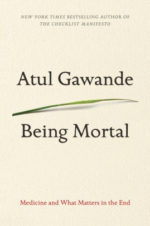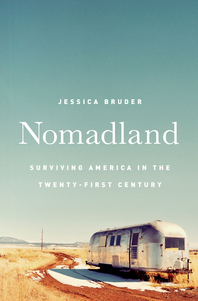Chicago’s Summer of Learning a good tryout of Learning 2.0 or Connected Learning
Posted on | October 3, 2013 | Comments Off on Chicago’s Summer of Learning a good tryout of Learning 2.0 or Connected Learning
For many months I have been tussling with how to bring the kinds of learning made possible by the Internet revolution to reality. As I have written in the Los Angeles Times, Chicago has provided a demonstration project in which students earned 100,000 digital badges making, building, and experiencing learning with more than 100 organizations.
I like the Summer of Learning partly for nostalgia: Chicago’s institutions—the Field Museum, the Museum of Science and Industry, and the Brookfield Zoo—provided me some memorable growing up experiences. And in terms of education policy, this summer’s experiment provided a working example of what the MacArthur Foundation calls Connected Learning.
While using different descriptors, Connected Learning is quite similar to what I have been calling Learning 2.0.
Historical moment of transformation
We start in the same place:
As Connected Learning says, “We are living in a historical moment of transformation and realignment in the creation and sharing of knowledge, in social, political and economic life, and in global connectedness. There is wide agreement tha
t we need new models of education suited to this historic moment, and not simply new models of schooling, but entirely new visions of learning better suited to the increasing complexity, connectivity, and velocity of our new knowledge society.”
We end in the same place:
“The principles of connected learning weren’t born in the digital age, but they are extraordinarily well-suited to it. Connected learning seeks to tie together the respected historical body of research on how youth best learn with the opportunities made available through today’s networked and digital media. Connected learning is real-world. It’s social. It’s hands-on. It’s active. It’s networked. It’s personal. It’s effective. Through a new vision of learning, it holds out the possibility for productive and broad-based educational change.”
And we share a similar critique of current education reform policy. As Connie Yarrow, director of education at Macfound, says in a video describing Connected Learning:
“We really think that part of what’s wrong with the current education system, and why people talk about it as broken, is that it is fundamentally starting with the wrong question. The education system now often starts with the question of outcomes: what do we want kids to learn? What’s the goal and what’s the content, what’s the material that they need to cover? And then everything is defined by that….
Our core question is ‘what’s the experience we want kids to have?’ So, the core question is around engagement. As soon as you start with ‘is the kid engaged; what is the learning experience you want the kid to have?’ then you have to pay attention to the kid. How do you create a need to know in a kid? That’s the important question.
That’s an intellectual question. That’s an identity question. And when you start designing learning experiences around that, then getting the content and getting kids engaged in core questions related to academic core, that’s actually the easy part. In school, we drum that out of kids.
We so decontextualize what their learning, we take it out of context and teach them discrete facts because we are so focused on these outcomes that we have forgotten the learner and we’ve forgotten that we actually have a passion for learning.”
I wish I had said it as well as she.
Learning beyond schooling to civic equity
More explicitly than I did in the Learning 2.0 posts, Connected Learning extends learning into the community, an old idea. The Chicago Summer of Learning activities took place within miles, sometimes blocks, of where John Dewey wrote about schools and community a century ago.
The idea of engaging the city writ large in education makes a commons—a place where we can all graze our intellectual sheep—out of an area of education that is both private and increasingly unequal. Greg Duncan and Richard Murnane captured the widening gap between rich and poor in the amount of money spent on out of school learning. In 2008, the upper 25% spent $6.70 for every dollar spent by a poor family.
Dewey understood the inherent educative nature of community, and that it was essential to train students in how to understand, criticize, and operate in the community because industrialization had broken the link between family and the economy. Dewey argued that modernization circa 1900 had also broken the monopoly on knowledge. Newspapers were cheap. Train travel allowed people to experience life beyond their town or village. Libraries provided common people access to knowledge previously reserved for the rich.
However, Dewey didn’t foresee industrial practices overwhelming schooling. He didn’t see that much of 20th Century education would turn on his learning principles. He didn’t anticipate losing.
David Labaree has recounted the politics that made it possible for one of the 20th Century’s most prominent thinkers to lose the battle over how public school students were taught. Perhaps most importantly: “the administrative progressive message of educational utility and social efficiency had great appeal to policymakers and people in power, since it offered to answer the great social problems of the early twentieth century in a manner that was in line with their own top-down orientation and social location.” (p.18).
My own take on the defeat of ideas that are remarkably similar to those proposed in Connected Learning, can be found in an essay review of the Douglas Thomas and John Seely Brown book, The New Arc of Learning. Play was weird; curriculum was not.
Crucial policy question: Who designs?
As I think about the public policy issues that we face now, the crucial question we face is: who designs, who creates the patterns for learning in the next few decades?
My fear is that the design question will be answered in such a way that the existing grammar of schooling is transported into new technologies. Stanford professor Larry Cuban once wrote a paper titled “How School Changes Reform,” showing how existing forms of schooling reasserted themselves swallowing reform efforts. It may be that the Internet is less a disruptive technology than it is commonly thought to be.
But we do have some small, interesting counter-examples, which brings me back to The Summer of Learning. SOL is interesting because it accomplishes more than keeping youth safe and engaged in learning as the schools take their accustomed vacation. It demonstrates the possibilities of network forms for providing education with many providers. It demonstrates bounded agency for students: they can pick from many options, but the options are all vetted and qualified. It demonstrates lowered barriers to entry: organizations that would not have the capacity to start their own schools can, nonetheless, provide lessons leading to badges.
And it demonstrates the power of credentialing. Students like the badges, and if my guess is right, the badges themselves will grow to have value and be highly radical and transformative.
Will the SOL change the fall, winter, and spring of learning? We don’t know yet, but I’m thinking that it will.
Tags: Chicago > David Labaree > Larry Cuban > MacArthur Foundation > Mozilla Foundation > Summer of Learning




